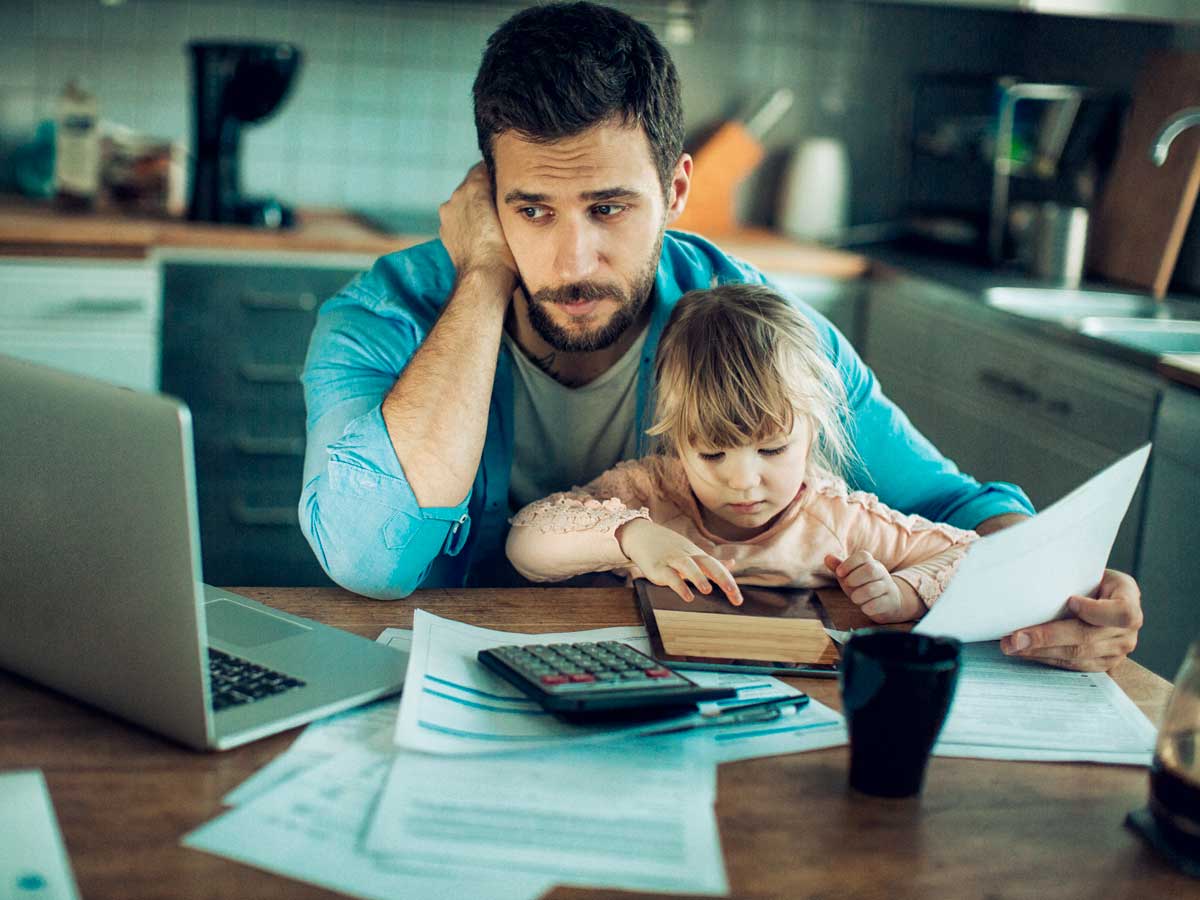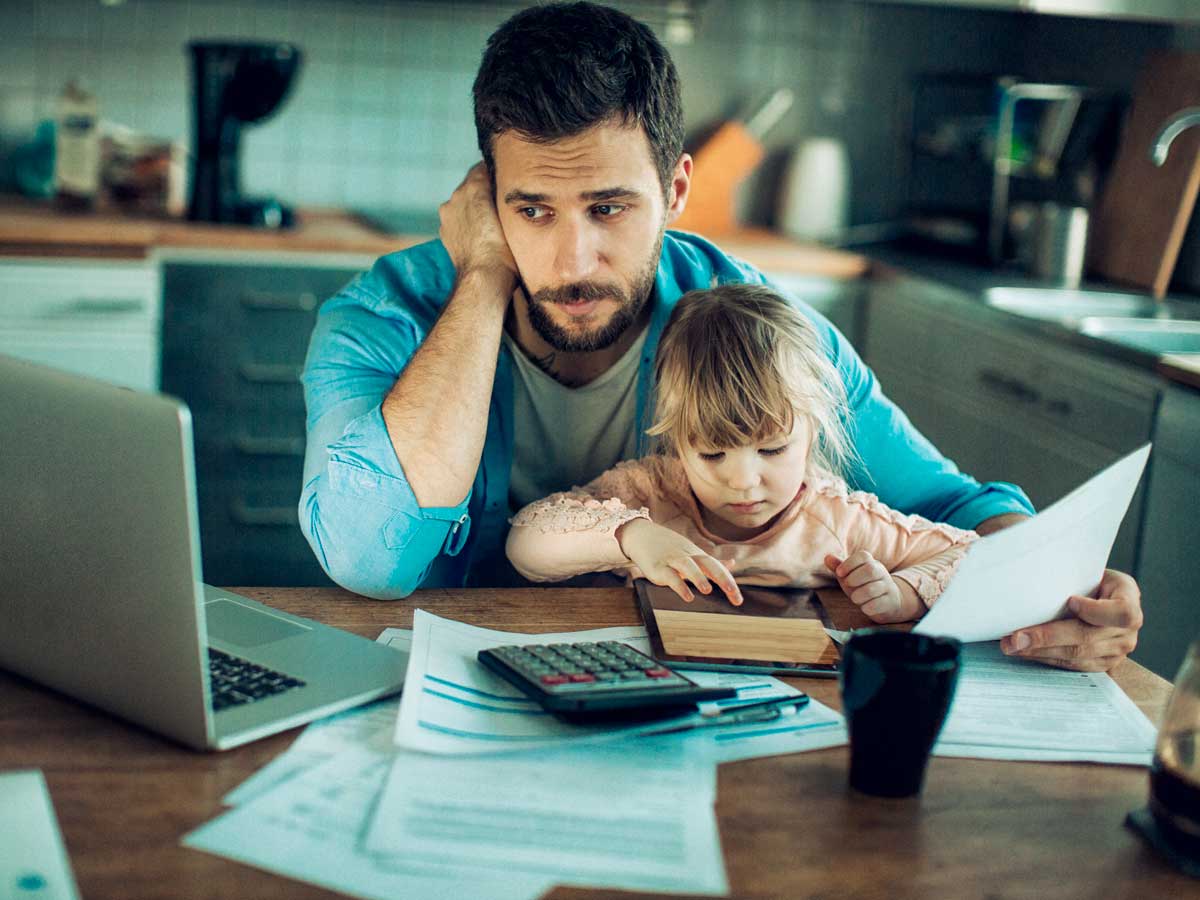
COVID-19 and finances: How to manage your debt in tough times
 According to a report from the Financial Consumer Agency of Canada, 31 per cent of Canadians say they have too much debt (Getty Images/Geber86)
According to a report from the Financial Consumer Agency of Canada, 31 per cent of Canadians say they have too much debt (Getty Images/Geber86)
The COVID-19 crisis has thrown millions of Canadians into financial distress. While some government support exists, for some, making rent or mortgage and car payments and buying groceries is increasingly challenging with incomes decreasing—or even disappearing altogether.
“These are difficult times, but they do present the opportunity for us to reconnect with our values and reassess how we spend our money,” says Doretta Thompson, CPA Canada’s financial literacy leader. “There are two stages to managing debt in a time like this. The first one is survival. How do we get through this? The second is recovery. How do we get back to financial stability? Right now, we’re in stage one and it’s important to note that the decisions we make during this stage can have a big impact on stage two.”
Here’s how to weather the storm in the months to come.
1) MAXIMIZE INCOME
First, determine the income available to you. Be sure to apply for federal and provincial financial assistance if you can. Even if you’re working part time, you may be eligible for certain programs.
With the Canada Emergency Response Benefit (CERB), you can earn up to $1,000 a month and still receive the $2,000 benefit. “In an ideal world, those who get the CERB would put some aside for taxes. But it’s an emergency measure to help pay for basic expenses, so this might be difficult,” says André Lacasse, a financial planner and the founder of Services financiers Lacasse. “Plus, it’s too early to determine the tax consequences of this benefit on annual incomes.”
Low-income, full-time workers deemed essential in the fight against COVID-19 who earn less than $2,500 per month are also eligible for a temporary top-up.
A special GST/HST credit of approximately $400 if you’re single or $600 for lower- and middle-income households will also be paid to those who meet the conditions.
Seniors eligible for the Old Age Security pension will receive a one-time payment of $300, and those eligible for the Guaranteed Income Supplement will receive an additional $200.
If you filed your income tax return on or before June 1, 2020, you should get your refund in two weeks (online) or eight weeks (paper). This can also be used for some of your expenses.
2) FIGURE OUT WHERE YOUR MONEY IS GOING
The next step involves a review of the past year’s expenses to distinguish your needs from your wants. This is especially important if you have debt or have lost your job. “You want to stay as flexible as you can and preserve your cashflow for you and your family,” explains Thompson.
To achieve this, look at your credit card and bank statements, and determine what matters and what you can do without.
Kathy Lempert, a CPA with a strategic and business consulting practice who also volunteers with CPA Canada’s Financial Literacy Program, performed the exercise herself, listing all her expenses and cutting nonessentials. “We’ve never experienced anything like this. Desperate times call for desperate measures. The government has only maintained essential services, and we should follow suit, sticking to necessities like those related to health, housing and food,” she says.
If you’ve never made a budget, now’s the time to start; there are many apps that can help you with this.
Once you’ve covered your basic expenses, try to build an emergency fund if you don’t already have one. It’s never too late to start, emphasizes Lacasse, whatever the circumstances. “Saving $20 a week isn’t much, but it adds up to more than $1,000 in a year,” he says.
3) MINIMIZE YOUR SPENDING
Once you know how much money you have and where it’s going, “limit spending to the bare minimum,” says Thompson. “Some things that seemed necessary at the start of the pandemic may no longer be.”
Even before COVID-19 hit, a report from the Financial Consumer Agency of Canada revealed that 36 per cent of Canadians were struggling to manage their day-to-day finances or pay their bills. Also, only 64 per cent had sufficient emergency funds to cover expenses for three months if they faced loss of employment.
If your family has two vehicles but only uses one, ask your insurer how to reduce your premiums without cancelling your policy. With the FAQ-16 rider, you could get a credit. Also, check if your premium will decrease during confinement, as is the case with certain companies.
Don’t hesitate to pare down your cable and internet services, gym membership, bank fees and so on. “Do you really need a mobile phone and a landline?” says Lempert. “Contact your providers and see what they suggest.”
Check if your property tax payments have been deferred. If you’re having trouble making rent, talk to your landlord. Then, check if your city or province is offering assistance, like interest-free loans. In addition, electric utilities like Toronto Hydro and Hydro-Québec have programs—including lower rates, deferred payments and flexible payment plans—to assist residents and businesses experiencing financial hardship.
If you can’t reduce certain expenses, spread them out over time. Taxpayers have until September 1, 2020 to pay any 2019 income tax amounts owed. Students and recent graduates have until September 30, 2020 to begin repaying their loans and any applicable interest.
In any case, find out what the costs are for deferrals. You want to pay less, not more, or pay on a schedule that’s better for you. “The economy will recover, but we don’t know when or how quickly, so we need to prepare for the long haul,” says Lempert.
4) MANAGE YOUR DEBT
What about the debt you already have? Contact your lenders and see what they propose. Ask if you can reduce your interest rates on credit card balances, for example, or defer monthly payments. Don’t forget to find out how much these arrangements cost. “Normally, we recommend that you clear your debts but, in this context, making minimum payments may be a better strategy for the short term, so you can keep your cash for essential expenses,” explains Thompson.
Banks are supporting Canadians in need of immediate cashflow with options such as deferring payment of mortgages, auto loans, credit cards and instalment purchases. Even ATM statement fees are being waived.
Remember, however, that load deferral is not loan forgiveness. You are going to have to pay back the debt eventually. It’s important to understand exactly what that will cost.
For example, “the interest from the mortgage you’re not repaying now will be added to the loan amount,” cautions Lacasse. “In other words, you’ll be paying interest on interest. If making those payments means you can’t buy groceries, the choice is clear, but it’s not without a cost.” According to the Canadian Bankers Association (CBA), more than 740,000 Canadians have already obtained mortgage deferrals or skipped payments.
“People should hold off as long as possible before requesting deferrals,” warns Lempert. “This measure is a safety net, not a payment holiday. Waiting also puts you in a better position to negotiate with the bank when the time comes. It shows that you made an effort before reaching that point.”
5) PROTECT YOUR SAVINGS AND YOUR CREDIT
If you absolutely need more cash, “dip into your tax-free savings account (TFSA), part of which should have remained relatively stable, since that’s where the emergency fund should be,” says Lacasse. “As of January 1 the following year, these withdrawals will be added to your contribution room.” In other words, you will be able to replace the withdrawn amounts.
Taking money out of your RRSP should be a last resort, according to the financial planner. “These withdrawals are taxable,” says Lacasse. “With a marginal tax rate of 37.12 per cent, you would have to pay $371 for every $1,000 withdrawn. Furthermore, they raise your taxable income, which could make you ineligible for certain tax or social measures like the CCB (federal). These benefits decrease as income increases. Lastly, when you withdraw funds from an RRSP, you permanently lose the contribution room you used for your deposit in the first place. In short, taking money out of your RRSP has major repercussions.”
Therefore, if you don’t have a TFSA, or if it’s empty, a line of credit may be practical in the short term. According to Lacasse, “Taking out a loan for everyday expenses is never a good idea, so be sure to exhaust all other options first.”
A line of credit lets you borrow money up to a preset limit. The interest rate is usually a few percentage points lower than that of other loans. The minimum monthly payment is often equal to the interest total or to a predetermined percentage of the balance. While homeowners may be able to get a lower rate because they use their home as collateral for a HELOC (Home Equity Line of Credit), those who don’t have such assets, like students, can still benefit from an interest rate that is much lower than that of a credit card, making it easier for them to regain financial stability down the road.
MORE COVID-19 UPDATES
Learn how to deal with debt during the crisis and take control and assess the situation after COVID-19 with this expert advice. CPA Canada has also put together resources to help navigate this difficult time—and beyond.
Learn about all the measures in Canada’s COVID-19 Economic Response Plan. Read about what small businesses can do to survive the crisis. Also, see what employers and employees need to do to keep the workplace safe, and how to steer clear of COVID-19 scams. Lastly, if you’re working from home, these tips will help you stay productive.